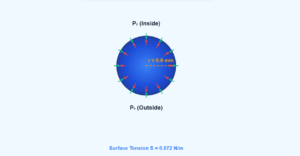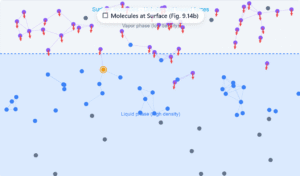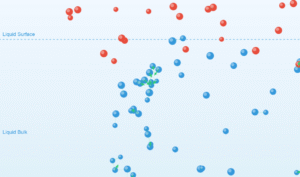Interactive Barometer 3D Model
Explore Atmospheric Pressure Through Interactive Visualization
Understanding Atmospheric Pressure Measurement
Welcome to our interactive barometer 3D model simulation, designed to help students visualize and understand how atmospheric pressure is measured using mercury column height. This educational tool demonstrates fundamental physics principles used in pressure measurement devices and complements thermal expansion experiment studies.
Learning Objective: Discover how changes in atmospheric pressure directly affect the height of mercury in a barometer tube, following the fundamental relationship P = ρgh (pressure equals density times gravity times height).
3D Mercury Barometer Visualization
Use your mouse or touch screen to rotate and examine the barometer from different angles. The mercury column adjusts in real-time based on the atmospheric pressure you set below.
Adjust Atmospheric Pressure
Move the slider below to simulate different atmospheric pressure conditions and observe how the mercury column height changes accordingly.
Real-Time Pressure Measurements
The data below updates automatically as you adjust the pressure slider, showing equivalent measurements in different units.
Where: P = atmospheric pressure, ρ = mercury density (13,595 kg/m³), g = gravitational acceleration (9.81 m/s²), h = height of mercury column
How Does a Mercury Barometer Work?
A mercury barometer is a fundamental instrument in physics that measures atmospheric pressure by balancing air pressure against the weight of mercury in a closed tube. This principle has been used since the 17th century and remains relevant in understanding thermal expansion experiment concepts and pressure-temperature relationships.
The Science Behind Pressure Measurement
When atmospheric pressure increases, it pushes down on the mercury in the reservoir, forcing more mercury up into the evacuated tube. Conversely, when pressure decreases, the mercury column falls. At standard sea-level pressure (1 atmosphere), the mercury column stands at approximately 76 centimeters or 760 millimeters tall.
Connection to Thermal Expansion
Understanding barometric pressure is essential when studying thermal expansion experiments, as temperature changes affect both air pressure and the volume of materials. This barometer 3D model helps visualize how pressure and volume relationships work in real laboratory conditions, providing a foundation for more advanced thermodynamics studies.
Historical Significance
Evangelista Torricelli invented the mercury barometer in 1643, creating the first instrument capable of accurately measuring atmospheric pressure. This invention revolutionized meteorology and our understanding of weather patterns, while also contributing to the development of pressure measurement standards still used today.
Practical Applications
Beyond weather forecasting, barometers are crucial in aviation (for altitude measurement), scientific research, and industrial processes. Modern digital barometers use electronic sensors, but they're calibrated against mercury barometer standards, demonstrating the lasting importance of this classical instrument.



